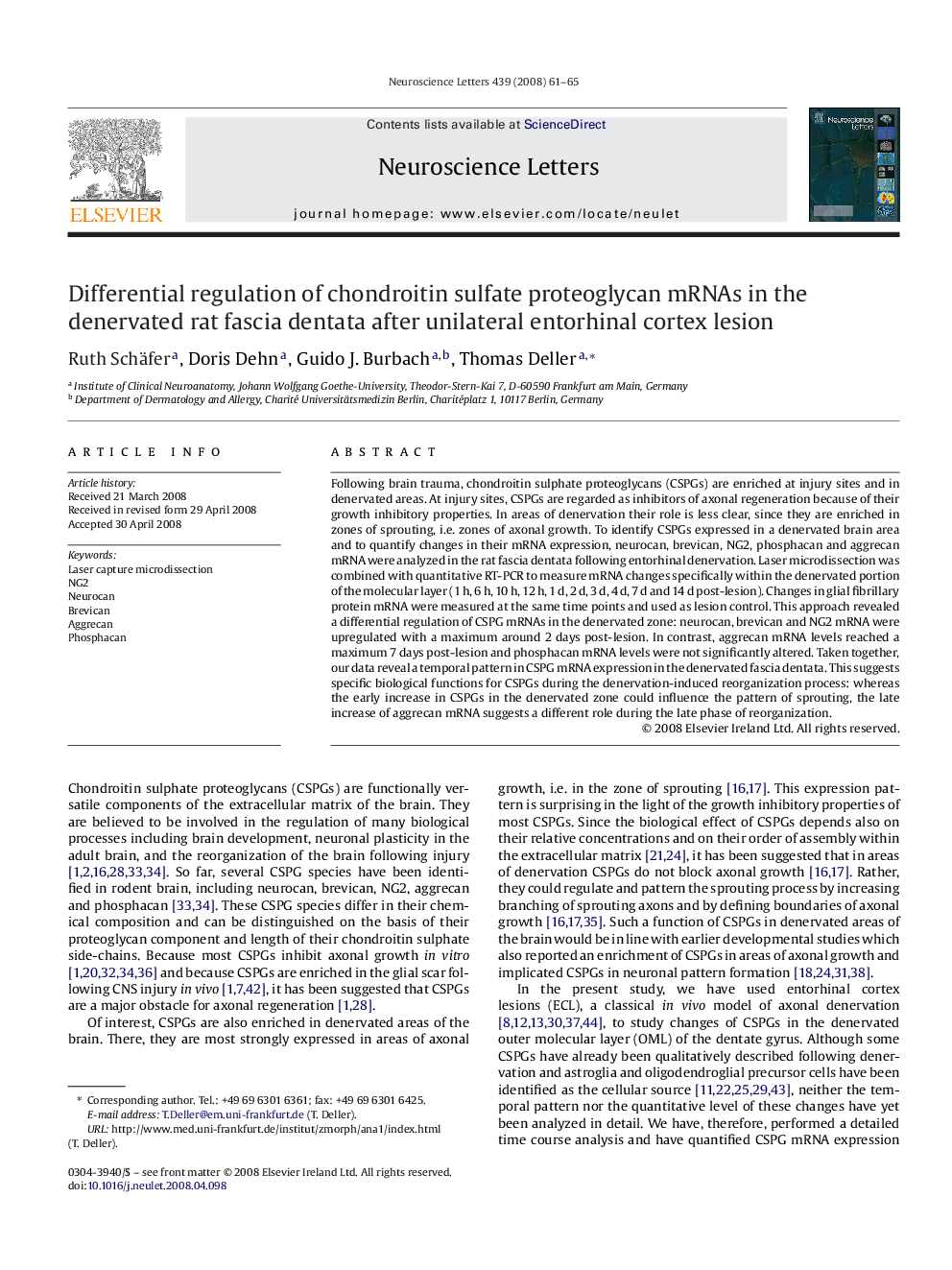| Article ID | Journal | Published Year | Pages | File Type |
|---|---|---|---|---|
| 4348482 | Neuroscience Letters | 2008 | 5 Pages |
Following brain trauma, chondroitin sulphate proteoglycans (CSPGs) are enriched at injury sites and in denervated areas. At injury sites, CSPGs are regarded as inhibitors of axonal regeneration because of their growth inhibitory properties. In areas of denervation their role is less clear, since they are enriched in zones of sprouting, i.e. zones of axonal growth. To identify CSPGs expressed in a denervated brain area and to quantify changes in their mRNA expression, neurocan, brevican, NG2, phosphacan and aggrecan mRNA were analyzed in the rat fascia dentata following entorhinal denervation. Laser microdissection was combined with quantitative RT-PCR to measure mRNA changes specifically within the denervated portion of the molecular layer (1 h, 6 h, 10 h, 12 h, 1 d, 2 d, 3 d, 4 d, 7 d and 14 d post-lesion). Changes in glial fibrillary protein mRNA were measured at the same time points and used as lesion control. This approach revealed a differential regulation of CSPG mRNAs in the denervated zone: neurocan, brevican and NG2 mRNA were upregulated with a maximum around 2 days post-lesion. In contrast, aggrecan mRNA levels reached a maximum 7 days post-lesion and phosphacan mRNA levels were not significantly altered. Taken together, our data reveal a temporal pattern in CSPG mRNA expression in the denervated fascia dentata. This suggests specific biological functions for CSPGs during the denervation-induced reorganization process: whereas the early increase in CSPGs in the denervated zone could influence the pattern of sprouting, the late increase of aggrecan mRNA suggests a different role during the late phase of reorganization.
